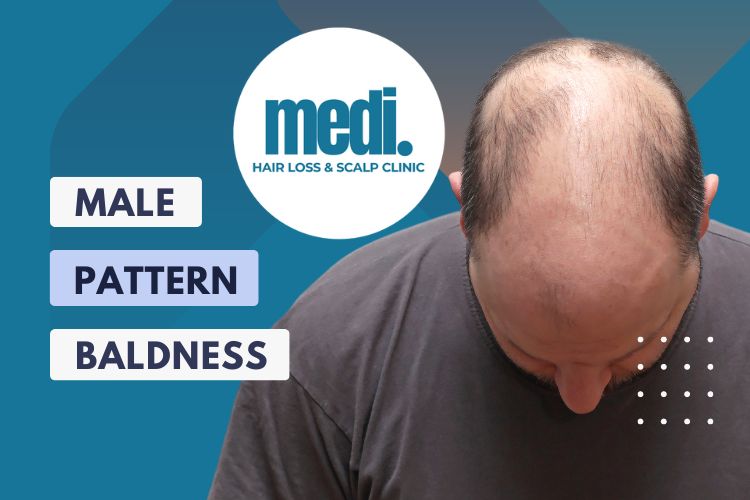Gupta, M., & Mysore, V. (2016). Classifications of patterned hair loss: a review. Journal of Cutaneous and Aesthetic Surgery, 9(1), 3. https://doi.org/10.4103/0974-2077.178536
Grymowicz, M., Rudnicka, E., Podfigurna, A., Napierala, P., Smolarczyk, R., Smolarczyk, K., & Meczekalski, B. (2020). Hormonal Effects on Hair Follicles. International Journal of Molecular Sciences, 21(15), 5342. https://doi.org/10.3390/ijms21155342
Hagenaars, S. P., Hill, W. D., Harris, S. E., Ritchie, S. J., Davies, G., Liewald, D. C., Gale, C. R., Porteous, D. J., Deary, I. J., & Marioni, R. E. (2017). Genetic prediction of male pattern baldness. PLOS Genetics, 13(2), e1006594. https://doi.org/10.1371/journal.pgen.1006594
Asilian, A., Farmani, A., & Saber, M. (2023). Clinical efficacy and safety of low-dose oral minoxidil versus topical solution in the improvement of androgenetic alopecia: A randomized controlled trial. Journal of Cosmetic Dermatology. https://doi.org/10.1111/jocd.16086
Rajput, R. (2022). Influence of nutrition, food supplements and lifestyle in hair disorders. Indian Dermatology Online Journal, 13(6), 721. https://doi.org/10.4103/idoj.idoj_175_22
Kaiser, M. A., Ferrari, L. M., Gaumond, S. I., Issa, N., Jimenez, J. J., & Issa, N. T. (2023). Platelet rich plasma combination therapies for treatment of androgenetic alopecia: A systematic review. Journal of Cutaneous and Aesthetic Surgery, 16(3), 169. https://doi.org/10.4103/JCAS.JCAS_206_22
Garg, A. K., & Garg, S. (2021). Complications of Hair Transplant Procedures—Causes and Management. Indian Journal of Plastic Surgery, 54(04), 477–482. https://doi.org/10.1055/s-0041-1739255



